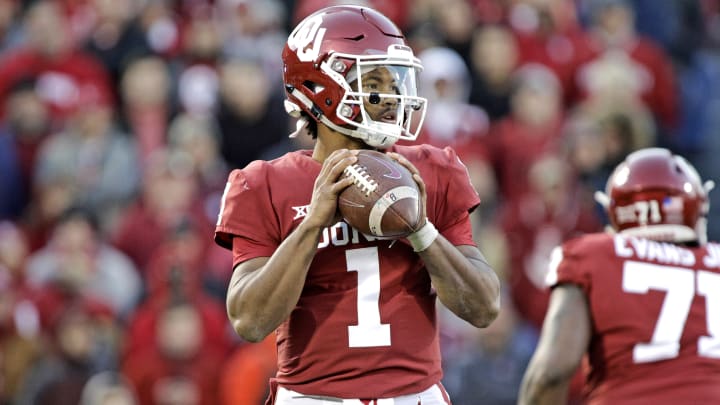CFP Rankings Analysis: What True Contenders Must Do to Reach the Playoff

Hey, look at that! This week's College Football Playoff rankings are just like last week's. Well, at least the part that really matters is exactly the same. We're still steamrolling toward national semifinals that will feature No. 1 Alabama vs. No. 4 Michigan and No. 2 Clemson vs. No. 3 Notre Dame.
In the spirit of making lemonade from the boring lemons we've been handed these last few week (in the CFP rankings department, of course; there's been plenty of fun elsewhere), let's see what each real playoff contender must do to reach the final four if the universe acts in a relatively normal way, i.e. most of the favorites win. (We're going to eliminate the possibility of complete chaos where a team, or teams, on this list can lose two more times and still make it. Likewise, LSU having lost twice already eliminates it from this exercise; the Tigers have basically reached their CFP ceiling.)
*Obviously, there are plenty more schedule permutations than the ones we listed. If we didn't list a particular scenario, it means that would definitely eliminate said team from contention.*
No. 1 Alabama
Beat Auburn and Georgia to finish 13–0 and SEC champs: IN
Lose one of its two remaining games to finish 12–1: Still IN, whether it's with an SEC title or not. We have a really hard time seeing Alabama fall all the way to No. 5 no matter what Clemson, Notre Dame or Michigan do down the stretch.
No. 2 Clemson
Beat South Carolina and Pittsburgh to finish 13–0 and ACC champs: IN
Lose one of its two remaining games to finish 12–1: Likely in, but Georgia winning the SEC would make things less certain.
No. 3 Notre Dame
Beat USC to finish 12–0: IN
Lose to USC to finish 11–1: This gets dicey. If Michigan wins the Big Ten, that helps the Irish's strength of schedule; if not, then it becomes less clear-cut. An 11–1 Notre Dame squad would likely be ahead of a 12–1 Washington State, but maybe not in front of 12–1 Oklahoma. And if Georgia wins the SEC, ND won't be ahead of 12–1 Alabama.
No. 4 Michigan
Beat Ohio State and Northwestern to finish 12–1 and Big Ten champs: IN, unless the SEC has a surprise in store (see above).
Lose to Ohio State to finish 10–2: OUT
Beat Ohio State, but lose to Northwestern to finish 11–2: OUT
No. 5 Georgia
Beat Georgia Tech and Alabama to finish 12–1 and SEC champs: IN
Lose to Georgia Tech, but beat Alabama to finish 11–2 and SEC champs: Probably IN, but will need help from upsets in at least one other major conference to make it a sure thing.
No. 6 Oklahoma
Beat West Virginia and then beat either WVU or Texas to finish 12–1 and Big 12 champs: Only in if at least one of the current top four lose AND Georgia doesn't win the SEC. There is no normal scenario where a two-loss Oklahoma makes the playoff.
No. 8 Washington State
Beat Washington and Utah to finish 12-1 and Pac-12 champs: Like Oklahoma, Wazzu would need lots of help from the teams ahead of it and has no margin for error.
No. 10 Ohio State
Beat Michigan and Northwestern to finish 12–1 and Big Ten champs: Only in if Oklahoma doesn't finish 12–1 and/or Georgia doesn't win the SEC while Alabama only ends up with one loss. The Buckeyes easily look like the weakest one-loss Power 5 conference team, and the committee agreed this week by moving UCF head of them.
The complete rankings are below.
1. Alabama
2. Clemson
3. Notre Dame
4. Michigan
5. Georgia
6. Oklahoma
7. LSU
8. Washington State
9. UCF
10. Ohio State
11. Florida
12. Penn State
13. West Virginia
14. Texas
15. Kentucky
16. Washington
17. Utah
18. Mississippi State
19. Northwestern
20. Syracuse
21. Utah State
22. Texas A&M
23. Boise State
24. Pittsburgh
25. Iowa State
